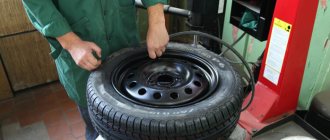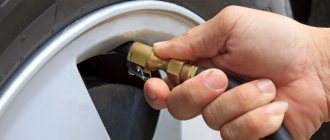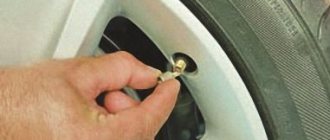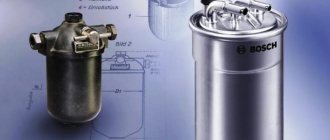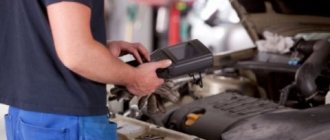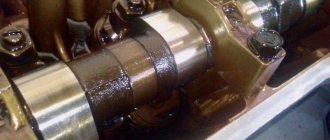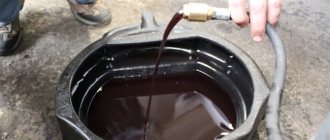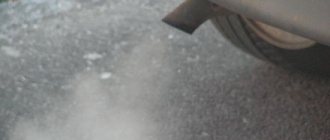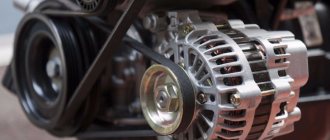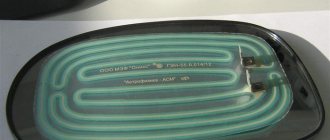28.12.2014
Studded tires are one of the types of winter wheels. Metal spikes are applied to the working surface of this type of rubber in a certain order, which, in turn, are necessary for better adhesion of the wheels to the icy surface of the road surface. Not every car owner knows that studded tires, like other types of wheel tires, should be run in before use, that is, subjected to gentle use.
How should new studded tires be broken in and why is it even necessary? – find out below.
Introduction
Recently, there is more than enough information about the features of the car and the mandatory measures taken on it, however, many car owners, when purchasing a new set of winter tires for the winter, “forget” or simply do not consider it necessary to break them in. New tires, no matter what manufacturer they belong to, must have a certain level of road grip and durability, which can only be achieved by increasing the mileage traveled. With a summer tire, things are simpler; after driving literally a hundred kilometers on it, the owner can rest assured that such tires are already adapted to any road surface. As for winter tires, more detailed attention is needed here. It is worth remembering that running in studded tires is needed more not for the tires themselves, but for their owner, who will be able to confidently drive the car even in difficult weather conditions.
Many drivers neglect to break in winter tires
Folding, tubeless tires
Nowadays, the technology of manufacturing folding tires is used, in which the cord is not wound with metal wire, but is woven from Kevlar thread.
There are two “cool” studded tires on sale and the only ones that are folding in their structure. They can be installed on the rim without a tube using special glue.
Four-row folding spike Suomityres WXC300. Has a size of 26×2.2. The lightest tire in its class - weighs 750 grams. It has 304 studs installed
Five-row tire Schwalbe Ice Spiker Pro HS 379. Available in several versions: 26×2.10 – 361 studs, 26×2.35 – 361 studs, 29×2.10 – 402 studs. Depending on the size, it weighs only 695, 850, 890 grams. The highest price is $168
Is it necessary to break in winter tires?
Beginners - car enthusiasts need to know that any tire is not made from a single material, it contains elements that are different from each other, differing both in structure and properties. Different materials in rubber are combined, they are arranged in layers relative to each other. In order for their interaction to be strong and durable, proper operation is necessary. First of all, purchased tires should be properly run-in.
Running in winter tires is also necessary because the rubber is equipped with studs, which only with proper use can be positioned correctly in the tread. The whole subtlety lies in the fact that in the production of tires with studs, an adapted technical lubricant is used, which allows the rubber to acquire better elasticity, which is especially necessary in the places where the studs come into contact with the rubber. For excellent functioning and interaction of studs and tires, after “re-shoeing” the car, you need to maintain a low speed limit. Those who neglect this advice and drive on new winter tires at high speeds may simply lose most of their studs along the road as a result of such actions.
Winter tires work in difficult weather conditions, on icy roads, which is why running-in is not just a convention, but a necessary element that will subsequently guarantee the owner confidence while driving. A new tire that has not been run in behaves uncertainly on a wet or snow-covered road surface, which, naturally, greatly complicates the process of driving a car.
Do-it-yourself tire studding with a pneumatic gun
At the initial stage of preparing a tire for studding, there are no differences with the above method. All the specifics lie only in the correct use of the pistol:
- A spike is inserted into the tool.
- The gun is placed at a right angle with its working side into the prepared technological hole so that the legs of the gun slightly move apart the edges of the recess.
- The trigger mechanism is activated, and the spike flies under pressure into the prepared hole.
Having completed this action, the shrinkage height is measured, and the angle of inclination of the tenon is also checked. If a defect is detected, it is removed and the procedure is repeated.
You can also watch several video instructions on how to stud rubber with a pneumatic gun:
The process of running in winter tires
Preparation
The question of how to break in winter studded tires is, of course, an interesting one, especially for beginners; experienced car owners usually know everything about this process. It is better to start preparing your car for the winter period in advance; even before the onset of cold weather, you should know what model of tires the car needs. In the fall, it’s worth buying a complete set selected in advance. Some people try to save money and buy only 2 wheels instead of 4, however, this decision is too improvident. An unpleasant situation may occur when an incomplete car on a wet or snowy road skids into a ditch (at best), and may even lead to a collision with another car. In this case, no amount of money saved will be enough, especially since it is worth remembering that your own life is much more valuable.
Replacement
So, it’s getting colder outside, autumn is coming to an end, there are still no frosts at night, but the thermometer is steadily moving towards zero. All these indicators indicate one thing - it’s time to change the tires, and the sooner this is done, the better. You can change the wheels yourself if you have certain skills and an hour or two of free time. For less experienced car owners, it is better to go to the nearest service station with prepared winter tires (with or without studs), where the car will undergo a series of tests. The most standard of which are:
- balancing, which will allow the suspension to function correctly and increase safety during the trip;
- camber - toe-in, which allows you to edit the driving parameters of the car (facilitate handling, increase stability on the highway, reduce the possibility of skidding);
- regulation of toe angles, reducing the amount of fuel consumed and reducing tire wear;
- normalization of the pressure level in the car’s tires, which affects the car’s maneuverability, driving safety, and tire wear rate.
Running in winter tires
The behavior of a car on recently purchased tires is somewhat different from driving on summer tires. Running in non-studded tires is also important because such tires have a significant tread depth. This is due to the need to provide the vehicle with high traction on snowy or icy road surfaces. It is important not only to remove technical lubricant from the tread, but also to feel the traction of the car, its maneuverability and the complexity/ease of control.
After replacing the tires, you should drive carefully for the first couple of hundred kilometers, looking closely and listening to the behavior of the car during smooth acceleration, when cornering and during braking. It is worth temporarily abandoning the high-speed mode; you should accelerate only to a certain speed that this tire design can withstand. You can find out the speed index by the tire marking.
Insert studs into the tire, methods for installing studs
- Completely manual. The advantage is accessibility to every consumer, the disadvantage is the high labor intensity of studding.
- Semi-automatic. The speed of work is much higher, but you should carefully monitor the correct position of each individual spike.
- Fully automatic. The spikes are driven in under great pressure. Advantages: reduced labor intensity of this activity and excellent fixation strength; disadvantages: high cost of the equipment.
In any case, the choice is yours, but it is irrational to purchase an expensive set of pneumatic equipment for one vehicle - it will come in handy if there are several cars in the family. In other cases, experts advise sticking with the semi-automatic method.
Running in studded winter tires
Particular attention should be paid to running in new winter tires with studs, which only during driving are able to take their rightful place. If this does not happen, then at high speed they may simply get confused. Change summer tires to studded winter tires before the “tinsmith's day”. This is what car owners jokingly call the day when the first snow falls on the roads. Running in studded tires should be carried out before the onset of frost and ice.
It is much more difficult to break in studded tires, which is due to the method of their production. The recessed studs consist of a carbide needle. There are about 100 pieces, together with a cylindrical metal groove, they fit into the tire. To simplify the process of soldering such a spike to rubber, small areas with holes are treated with a certain substance. In the process, the rubber is stretched, a spike enters the hole, which is subsequently compressed by this material.
It is the first hundreds of kilometers that allow the still unadapted tires to gain normal functioning, the studs will take a better location, some of them will rise, some will fall. At the same time, the lubricant remaining in the grooves will disappear. Running in studded tires can be considered complete only after 500 km of measured driving at a speed not exceeding 60 km/h. While driving, you should not accelerate too much, take turns sharply at your usual speed, or brake instantly. Otherwise, the life of the tires may be reduced significantly.
Recently, bright lines have been “drawn” on studded tires - a running-in indicator, which disappears when the rubber is normalized and adapted, which indicates the ability to operate this rubber to its fullest extent.
Features of mounting studs
As practice shows, the most suitable for studding are tires that already have ready-made holes for installing wheel studs. You can find out about the presence of these holes from the markings of passenger car tires. In addition, the holes are clearly visible visually and are large in size, so beginners will not be able to damage the rubber.
To re-stud and re-stud the wheels you will need to stock up on an air gun. With its help, wheel studding will be done quickly and efficiently
During the tucking process, you should pay attention to how much the stud itself protrudes from the surface of the wheel. It is best if the tip of the latter does not stick out higher than 1.5 mm from the tread
Otherwise, the spike will fly out of the hole very quickly. After you have found a gun, you need to decide on the terrain you are driving through.
Pneumatic gun for re-studding
Whether you're studding your wheels for the first time or doing it again, you'll need a solution of soap and water. The water must be warm - this will greatly facilitate the passage of the stud into the rubber. The principle is this: before studding, the outer side of the tire is wetted with a solution, after which the studs need to be inserted into the holes of the tire
Particular attention should be paid to working with a pistol. Before adding studs, the separator of the pneumatic device is filled with studs.
After that we get to work
In this case, the position of the gun itself is very important - it must be held strictly vertical in relation to the surface of the tire
When installing spikes you need to be extremely careful. After they fit into the tire, they need to be measured. If the spike has entered the wheel, but more than 1.5 mm of the entire body of the spike remains above the tread, then you need to take a small piece of aluminum sheet, put it on the screw and hit the metal with a hammer. If after this the stud does not fit into the tire, then you will have to re-stud, that is, install a new element again. In this case, the old spike must be thrown away, since it will no longer be suitable for work.
Main tasks of running in
In order for studded tires to work with maximum efficiency, it is important to use the tires correctly in the first hundreds of kilometers. Particular attention is paid to the speed limit. The fact is that during the production of tires, casting molds are treated with a special lubricant to prevent rubber from sticking to the metal. A thin layer of lubricant remains on the surface of new wheels. To remove the slippery layer, you need to move at low speed for the first 100-200 kilometers of the journey. In addition, the new tire tread has the thinnest outer rubber coating. It disappears after a certain time, thereby releasing the metal spikes. In order for technological rubber to wear off evenly, it is necessary to inflate the tires with air taking into account the pressure recommended by the manufacturer, and also avoid sudden braking on the road.
Many motorists complain about the loss of studs in the first weeks of using winter tires. Experts explain this situation by the fact that drivers make a lot of sudden movements, acceleration and braking. During the running-in stage, the studs must fit tightly into their niches, otherwise they will fall out of their landing sockets. The fact is that before pouring the rubber, the holes for the studs are lubricated to facilitate the installation of metal elements. And only during driving are the caps of the spikes completely fixed in the containers. Steel products will hold most reliably after the lubricant has completely evaporated, so the speed during this period should be limited, and sharp turns of the steering wheel, rapid accelerations and emergency stops should be avoided.
Some nuances
It is also necessary to carefully monitor changes in tire pressure during the process. It is not recommended to drive even on slightly flat tires. After all, the spikes can not only wear out, but also fall out. You should check your blood pressure once a month. As for inflating studded tires, it should be carried out only in specialized premises. The tires must first cool down a bit. Do not forget that the pressure in the wheels should be no more than 2.8 bar. During running-in and further use of studded tires, it is necessary to ensure that small stones and other objects do not clog into the tread. This may worsen the condition of the tires.
View gallery
When to break in
It is better to test studded tires before the start of the season. Experts recommend starting to break in new tires before frost sets in. It is best to do this on an asphalt road. This way the load will be distributed more evenly and the tires will take on the desired shape.
It is also not recommended to start running on wet asphalt. This coating is very dangerous, and the first hundred kilometers can be very dangerous. The car will behave unpredictably, and this is fraught with consequences.
View gallery
Making your own winter bike tires from summer tires
So, we are faced with the task of studding bicycle tires, because we don’t have the money to buy branded tires, or we are proud and confident in our abilities, or something else. First, let's look at the advantages and disadvantages of studding tires with our own hands. It’s most pleasant to consider the pros, so let’s start with them:
- price - even if we do not take the cheapest or worn-out tire for the experiment, we will end up with a price difference of one and a half to two times.
- accessibility - absolutely all elements for studding, except the tire, can be purchased within one hardware store.
- efficiency - depending on skill, the entire operation will take no more than a few hours.
- Possibility of choice - we choose the material and length of the spike itself to suit our needs.
Now we have to consider the disadvantages of self-studding:
- carbide tips of studs do not shine for us.
- there is no confidence in the quality of the material for the spike.
- it will take some effort.
- there is a possibility of poor quality assembly.
Now we know what we find and what we lose when studding ourselves. If the scales still tip towards pride and self-confidence, we collect everything we need to get started. Namely:
- tires for bicycles with tread block dimensions of at least 5x5 mm – 1 pc.
- stainless steel fastening screw, M2x15 or M2x13 mm, with a semicircular cross head, as many as we plan to install tenons.
- nut M2, stainless.
The tools we need are a drill, wire cutters or pliers, a 1.5mm drill, and a 4mm spanner.
When all this is collected, you can safely get to work.
A more extreme version of self-studding
DIY Bicycle Tire Stud Guide
- There is no need to stud all tread blocks. Select a pattern and estimate the number of spikes you want to install. The front wheel must be able to be controlled well, so we recommend studding the side blocks as well. The center on the rear tire is important for good traction.
- Drill holes in the tire exactly in the center of the blocks.
- Insert screws into the holes. It is necessary that the screw enters with a little force, but not too loosely, otherwise it will turn and damage the camera.
- We put this structure on the rim and pump up the wheels. Not much.
- We install the wheels on the bike and turn it over.
- We tighten the nuts, patiently and carefully.
- Insert the socket wrench into the drill chuck and tighten the nuts.
- It is better to drip glue into the tightening areas so that the nut does not unscrew.
- We bite off the excess thorn with pliers.
- We admire it.
https://youtube.com/watch?v=oaMkiXIzUC0
Balancing after running in
Due to their characteristics, tires with studs lose balance when running in. This is due to the fact that during this process, individual elements are pressed in or out. Lack of balance affects increased fuel consumption and deterioration of controllability.
Thus, after running in, you should definitely balance the wheels.
Rolled tires with studs are a guarantee of the safety of the driver and passengers when driving on difficult winter roads. If you follow the rules described above, the break-in process will be high-quality, quick and painless. Some manufacturers install special indicators on tires. Based on them, each driver can easily determine the end of this procedure.
2 comments
Source: okuzove.ru
In conclusion
Before purchasing studded tires, you should check with the seller about the features of its operation and the manufacturer’s recommendations. On some tires the manufacturer leaves a special indicator. If it is completely worn out, then the running-in was successful and you don’t have to worry about the behavior of the vehicle on a winter road. Experts recommend installing studded tires not only on the drive axle. This is one of the main requirements. If you properly break in new studded tires, they will last a very long time. At the same time, grip on slippery road surfaces will be more reliable, and the driver will get used to the behavior of the car.
The process of running in studded tires in the autumn
It is highly not recommended to break in new tires in the middle of the season. If you decide to change your tires this season, do it in the fall as soon as daytime temperatures drop below seven degrees above zero. This will help you run your tires on the asphalt in a safe environment. After all, when changing tires in winter, there will be a noticeable change in the behavior of the car. You can change tires during the season only if you drive more than 40-50 thousand kilometers during the winter months and get used to driving a car in such conditions.
Running in rubber has two important aspects. First, the driver has time to get used to the braking distance, acceleration, and other operating features of the new tires. Another important parameter is maintaining the performance of the tire and preventing the studs from falling out. To break in you need to use the following tips:
- drive the first 500 kilometers at a speed of up to 75-80 kilometers per hour;
- Avoid sudden accelerations and heavy braking during the break-in period;
- if the run-in takes place on asphalt, keep the car speed within 60 kilometers per hour;
- Do not use tires immediately after replacement over long distances;
- After each trip, check the studs to make sure they are present.
In modern tires, the studs are made in a special shape, as well as the grooves for them. This allows less iron to be lost along the way and reduces break-in requirements. However, running in winter studded tires is necessary for the driver himself. This will allow you to get used to the new behavior of the car and get enough information for a comfortable and safe trip in winter.
If there is no break-in, you will have to come to terms with some negative aspects that will force you to change tires more often and reduce the safety of your trip in winter.
Basic recommendations on how to avoid mistakes
When running in, you should try to avoid high speed, sudden acceleration, jerking the car from a stop, sudden braking, and try not to change lanes again. The minimum running-in period for studded tires is about 500 km. It would be better to extend it to 1000, which is guaranteed to allow all tire components to securely grip the casings and flanges of the tire studs.
The main task is to hold the tenons in the flanges
With proper running-in of studded winter tires, it is possible to preserve the studs and the maximum service life of the rubber, while ensuring the highest functionality of the tires under heavy loads. Running in is the key to the durability of winter studded car tires.
Running in studded tires is strictly necessary and is necessary not only for the tires themselves, but also for the driver of the car. When purchasing winter tires with studs, you need to run them in as thoroughly as possible, because this will be the key to successful vehicle handling and safety of both the vehicle and the crew.
